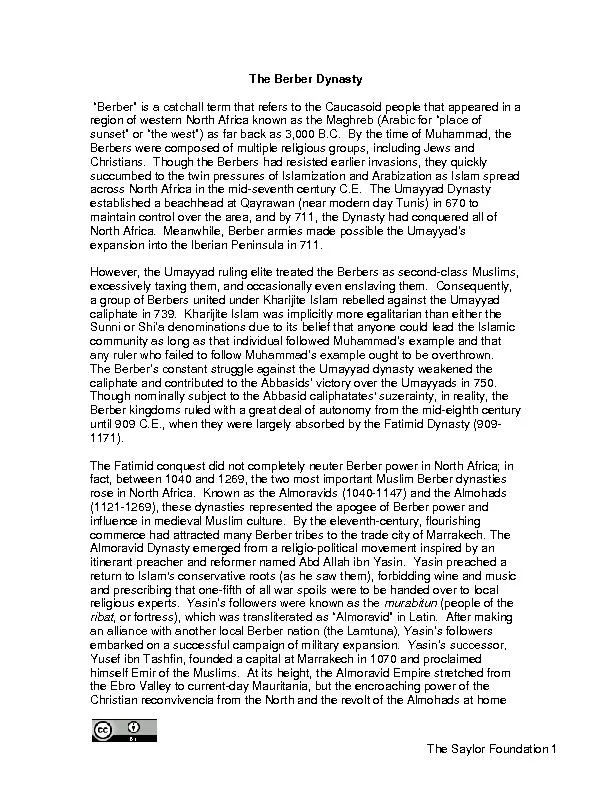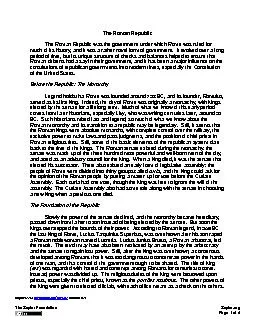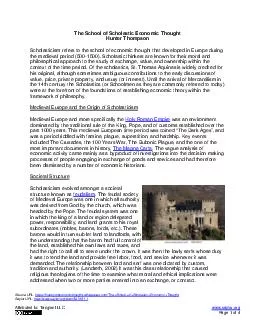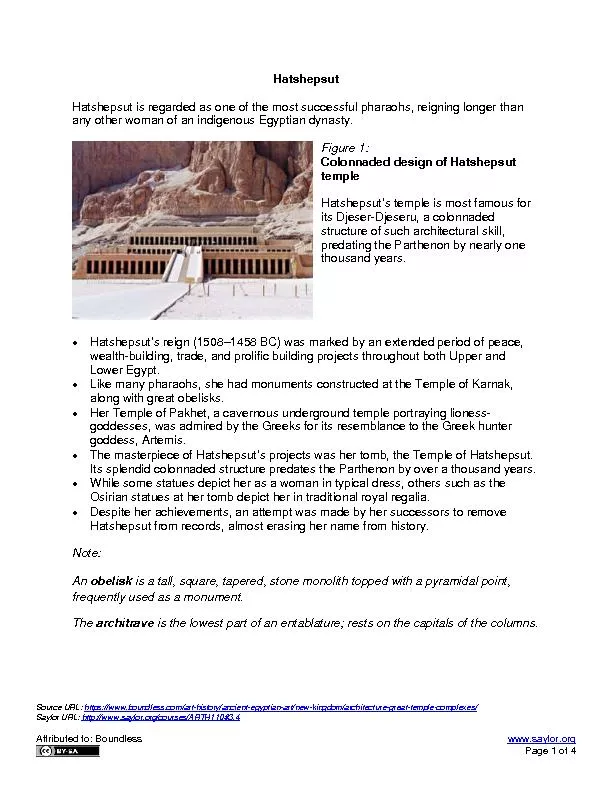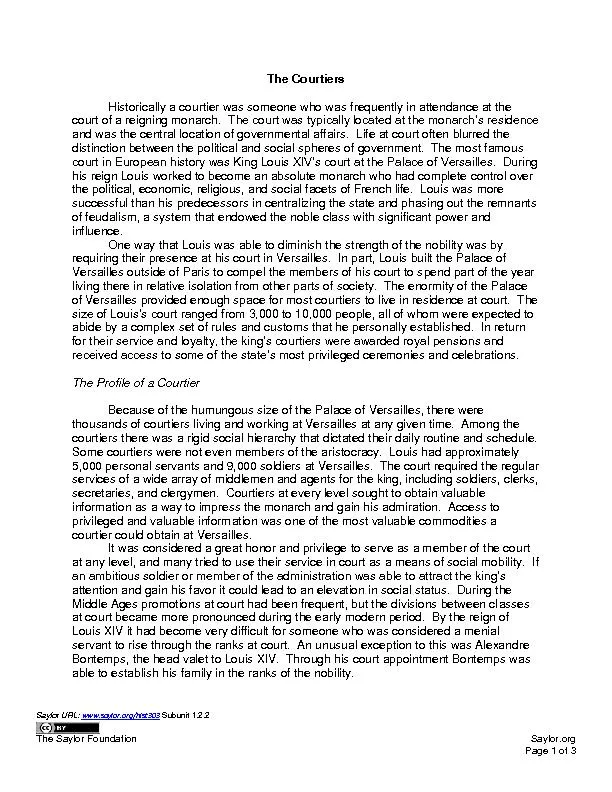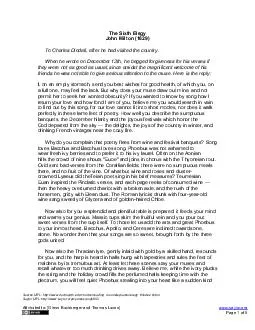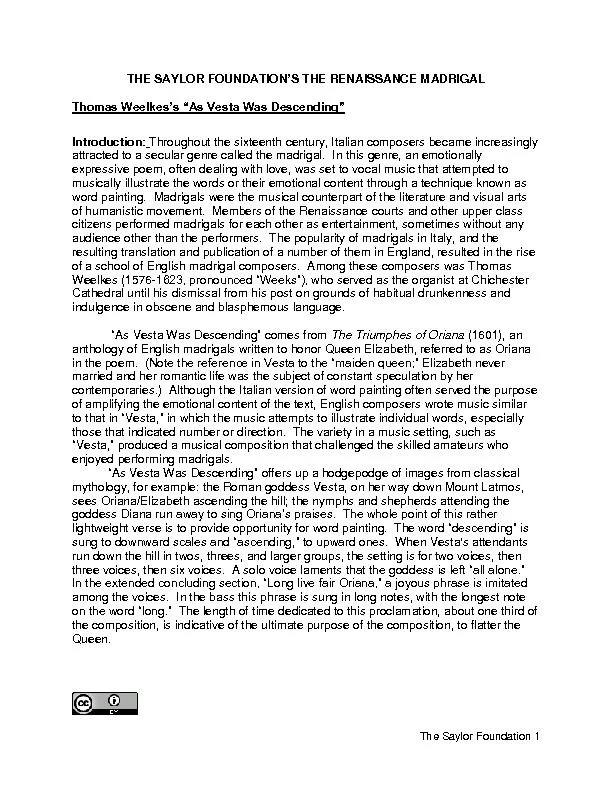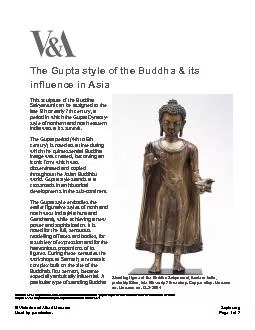PDF-The Saylor Foundation
Author : liane-varnes | Published Date : 2016-10-15
1 The Berber Dynasty x201CBerber x201D is a catch all term that refers to the Caucasoid people that appeared in a region of western North Africa known as the Maghreb
Presentation Embed Code
Download Presentation
Download Presentation The PPT/PDF document "The Saylor Foundation" is the property of its rightful owner. Permission is granted to download and print the materials on this website for personal, non-commercial use only, and to display it on your personal computer provided you do not modify the materials and that you retain all copyright notices contained in the materials. By downloading content from our website, you accept the terms of this agreement.
The Saylor Foundation: Transcript
Download Rules Of Document
"The Saylor Foundation"The content belongs to its owner. You may download and print it for personal use, without modification, and keep all copyright notices. By downloading, you agree to these terms.
Related Documents

